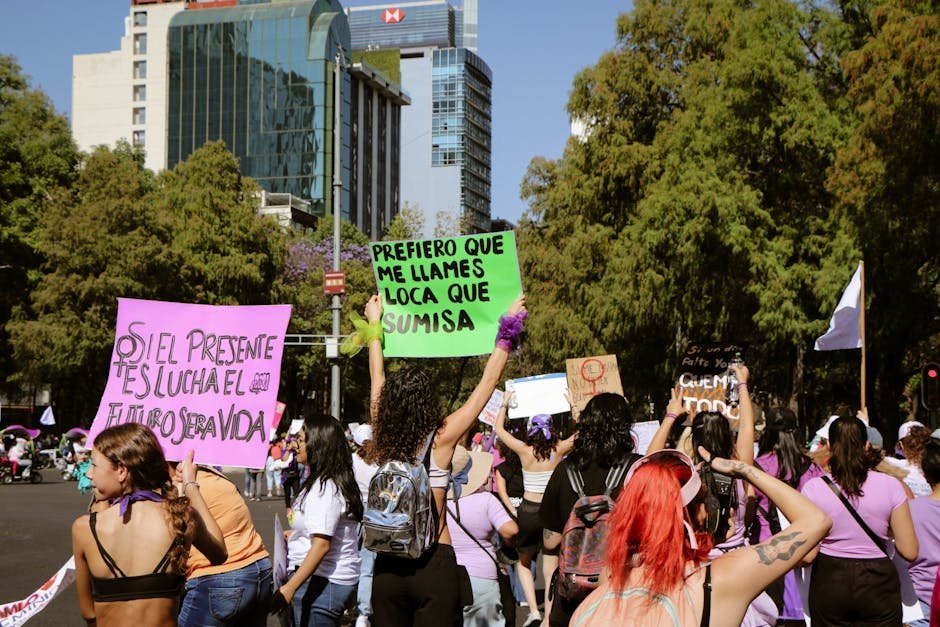MEXICO CITY, MEXICO (AP) — A protest against gentrification in Mexico City’s Roma Norte neighborhood escalated into violence on July 12th, 2025, leaving several injured and prompting a heavy police response. The demonstration, initially peaceful, saw hundreds of residents march against rising rents and displacement due to the influx of upscale businesses and real estate developments. The situation deteriorated when clashes broke out between protesters and law enforcement.
Escalation of Tensions in Roma Norte
The protest, organized by the grassroots group “Defiende tu Colonia,” began as a peaceful march through the historically working-class neighborhood. Participants carried banners and chanted slogans denouncing rising property values and the displacement of long-term residents. The demonstration drew significant media attention, highlighting growing concerns about gentrification’s impact on the city’s social fabric. Police initially maintained a largely passive presence, but the situation changed dramatically in the late afternoon.
Clashes and Police Response
Tensions rose sharply when protesters attempted to block major thoroughfares in the Roma Norte area. The demonstration quickly became confrontational, with some participants throwing rocks and bottles at police officers. Law enforcement responded with riot control measures, using tear gas and deploying mounted police to disperse the crowd. Ambulances were seen attending to numerous individuals suffering from injuries ranging from minor bruises to more serious head trauma.
Gentrification’s Impact: A National Issue
The Roma Norte incident serves as a stark example of the rising tensions fueled by gentrification across Mexico City and other major urban centers in Mexico. This trend, characterized by the displacement of lower-income residents to make way for upscale development, is creating a deep social divide. The increasing cost of living, coupled with a lack of affordable housing options, has led to widespread discontent and anger. This is not isolated to Roma Norte. Similar protests have erupted in other neighborhoods experiencing rapid gentrification.
Economic Disparity and Social Unrest
The underlying economic inequalities driving these protests cannot be ignored. The widening gap between the wealthy and the poor is a significant factor in the escalating social unrest. Many long-term residents are being forced out of their homes and communities, unable to afford the rising costs associated with the influx of affluent newcomers. This contributes to social instability and fuels resentment amongst those left behind.
Government Response and Future Implications
Mexico City’s Mayor, Claudia Sheinbaum, issued a statement following the protest, expressing concern over the violence and promising an investigation into the events. She acknowledged the legitimate concerns of residents regarding gentrification and hinted at potential policy adjustments aimed at addressing the affordable housing crisis. However, concrete measures are yet to be announced. This event underscores the need for government intervention to address the causes of gentrification-related conflicts.
Policy Recommendations and Potential Solutions
- Increased investment in affordable housing initiatives: The city needs to significantly increase the supply of affordable housing to meet the growing demand.
- Rent control measures: Implementing rent control policies could help prevent excessive rent increases and protect vulnerable residents.
- Community engagement and participation: The government needs to foster meaningful dialogue and collaboration with affected communities in developing solutions.
- Tax reforms to discourage speculative real estate investment: Implementing policies that discourage speculative investments could help stabilize property prices.
- Strengthening tenant rights protections: This is crucial for safeguarding the rights of renters facing eviction.
The failure to address these issues could lead to further social unrest and instability within Mexico City.
Long-Term Economic and Social Consequences
The ongoing gentrification in Mexico City poses significant long-term economic and social consequences. The displacement of working-class residents leads to a loss of cultural diversity and the erosion of long-established community ties. The loss of affordable housing disproportionately affects low-income families and marginalized communities, exacerbating existing inequalities. This social disruption can trigger a range of negative consequences, including increased crime rates, and deterioration of public health outcomes.
The Human Cost of Gentrification
Beyond the immediate violence, the human cost of gentrification in Roma Norte and other affected neighborhoods is profound. Families face eviction, separation from their support networks, and the disruption of their livelihoods. The psychological impact on individuals forced to leave their homes and communities cannot be underestimated. This displacement often results in increased stress levels, anxiety, and depression.
International Parallels and Global Trends
Mexico City’s struggles with gentrification are not unique. Many global cities are grappling with similar challenges, characterized by escalating property values, the displacement of lower-income communities, and resulting social unrest. The events in Roma Norte serve as a cautionary tale for other cities facing similar pressures, highlighting the need for proactive measures to address the root causes of gentrification and mitigate its negative consequences.
Lessons Learned and Future Strategies
The events in Roma Norte underscore the importance of proactive planning and community engagement in addressing gentrification. Cities need to develop comprehensive strategies that balance economic development with social equity, ensuring that the benefits of urban renewal are shared broadly across all income levels. This requires a shift from a purely market-driven approach to one that prioritizes the well-being of residents, particularly those most vulnerable to displacement. Ignoring this challenge will continue to lead to social unrest and long-term societal damage. The global community needs to pay attention to these events as a warning sign.
Conclusion: The violence in Roma Norte serves as a stark reminder of the profound social and economic consequences of uncontrolled gentrification. Addressing this issue requires a multifaceted approach that combines policy changes, community engagement, and investment in affordable housing. Failure to act decisively risks further social unrest and the erosion of the social fabric of Mexico City and other cities worldwide facing similar challenges. The coming months will be critical in determining whether the city can effectively manage these tensions and prevent future escalations.







